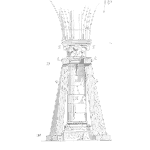
What you will learn from this article.
- The types of forces developed in a turning agitator.
- Gearbox position and configuration for long-life.
- Bearing arrangements to minimise gearbox loading.
- Simple, strong agitator support arrangements.
- Vapour seals are needed to stop fumes escaping.
- Lots of low maintenance selection and design tips.
Agitated vessels and tanks are common throughout the process and chemical industries. A properly sized agitator with correct proportions to suit the tank will deliver well-mixed product. A correctly sized gearbox with well-chosen bearings and bearing arrangements will need only regular lubrication while giving years of trouble free service. [Read more…]











